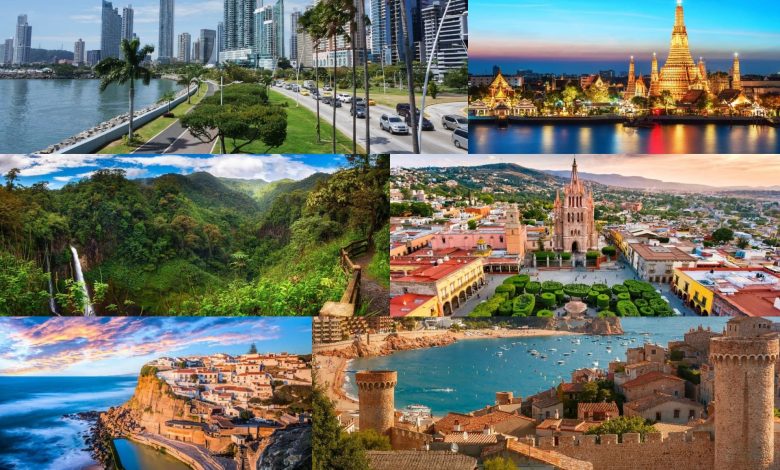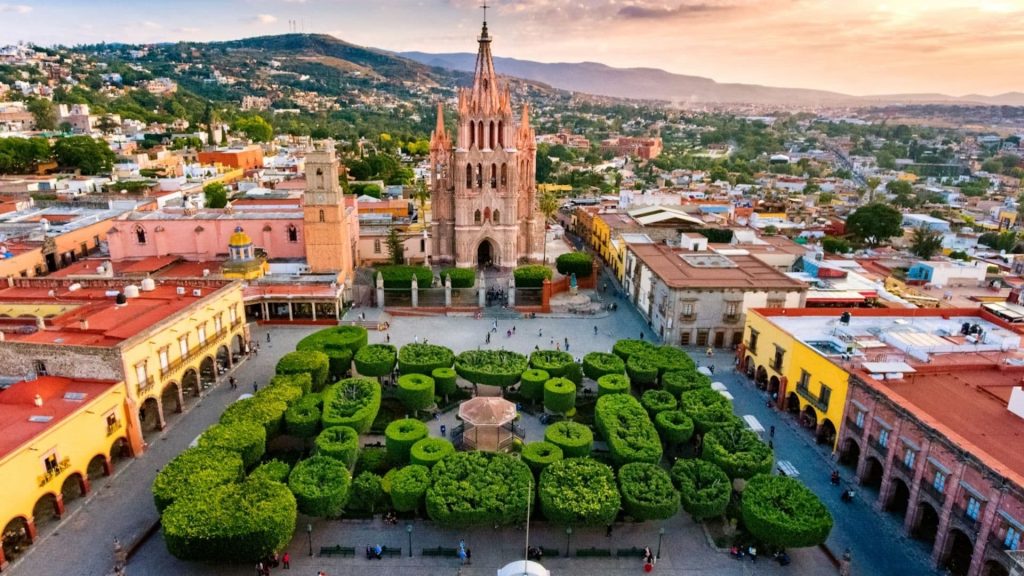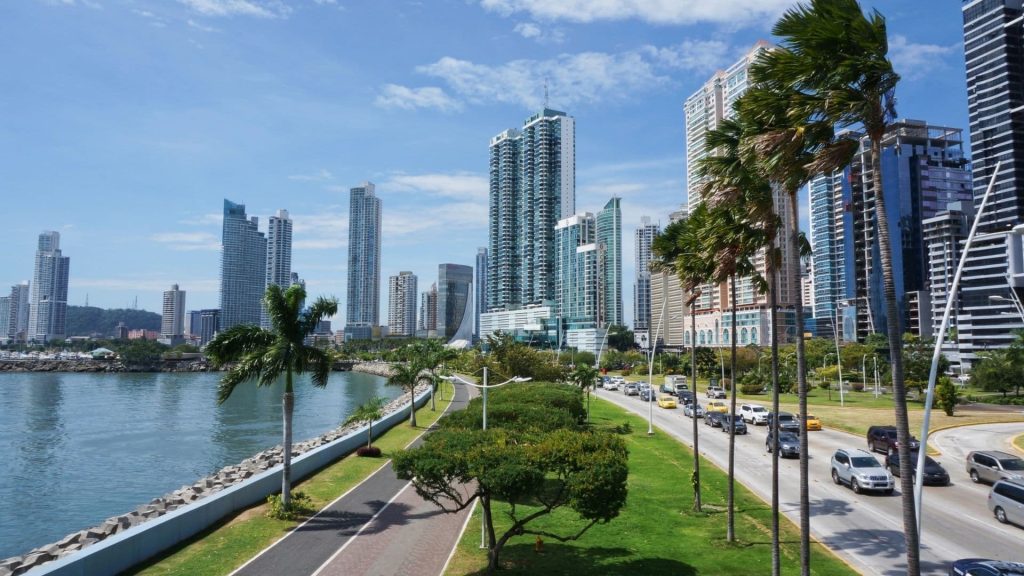
Choosing the best country to retire in from the USA is a significant decision that requires careful consideration of factors like affordability, healthcare quality, safety, and lifestyle preferences. Many Americans dream of retiring abroad to enjoy a lower cost of living, better weather, or simply a change of pace. Countries like Portugal, Costa Rica, and Mexico consistently rank high on retirement lists for their expat-friendly policies and vibrant communities. Whether you’re seeking tropical beaches, historic cities, or peaceful countryside retreats, there’s a perfect destination waiting for you.In this article, we’ll explore:
- The best countries for American retirees based on key criteria
- Visa options and residency requirements
- Cost of living comparisons
- Healthcare systems and tax implications
Top Countries to Retire In From the USA

1. Portugal
Portugal is a favorite among U.S. retirees due to its warm climate, affordable cost of living, and excellent healthcare system. The Algarve region is particularly popular for its stunning beaches and expat-friendly communities. Retirees can apply for the D7 Visa or Golden Visa programs to establish residency. The cost of living is relatively low compared to other European countries, with monthly expenses averaging $2,000–$2,500.
- Key Benefits: Affordable housing, low crime rates, rich cultural heritage
- Healthcare: High-quality public and private healthcare systems
- Taxation: Under the Non-Habitual Resident (NHR) regime, foreign pension income is taxed at a flat rate of 10% for a period of 10 years. The first €4,104 of pension income is exempt from taxation. After the NHR period, retirees are taxed on their worldwide income at progressive rates up to 48%. The NHR program is closed to new applicants as of January 2024.
- Visa Options and Residency Requirements: Portugal offers the D7 Visa, also known as the Retirement Visa, which requires proof of stable passive income (minimum €820/month) and a clean criminal record. The visa is valid for two years initially and renewable for three years. After five years of residency, retirees can apply for permanent residency or citizenship. Alternatively, the Golden Visa allows residency with a minimum investment in real estate or other qualifying assets, requiring only seven days of stay per year.

2. Costa Rica
Known for its “Pura Vida” lifestyle, Costa Rica offers a laid-back environment with beautiful landscapes ranging from beaches to rainforests. The Pensionado Program makes it easy for retirees to obtain residency if they have a stable monthly income (e.g., Social Security). Living costs range from $1,500–$3,000 per month depending on location.
- Key Benefits: Affordable living costs, eco-friendly lifestyle
- Healthcare: Universal healthcare system (CAJA) with private options
- Taxation: Costa Rica operates on a territorial tax system, meaning only income earned within the country is subject to taxation. Foreign-sourced income, such as pensions or Social Security benefits from the United States, is generally not taxed. This provides significant tax advantages for retirees. Additionally, Costa Rica offers tax incentives for retirees and investors, including exemptions from import taxes for household goods and other fiscal benefits under specific residency categories. The general tax rates for income earned within Costa Rica are progressive, ranging from 0% to 25%, depending on the amount of income.
- Visa Options and Residency Requirements: Costa Rica provides the Pensionado Visa for retirees with a guaranteed lifetime pension of at least $1,000 per month. The visa is valid for two years and renewable if requirements are met. After three years of temporary residency, retirees can apply for permanent residency. Permanent residents must visit Costa Rica at least once a year, and citizenship is possible after seven years of legal residence.

3. Mexico
Mexico remains one of the most popular retirement destinations due to its proximity to the U.S., affordable living costs, and vibrant culture. Popular expat hubs include San Miguel de Allende and Puerto Vallarta. Retirees can apply for a Temporary Resident Visa by proving sufficient income or savings.
- Key Benefits: Low cost of living, established expat communities
- Healthcare: High-quality private healthcare at a fraction of U.S. costs
- Taxation: Mexico taxes its residents on their worldwide income, including foreign income. Retirees are subject to a progressive income tax system with rates from 1.92% to 35%. There are no additional taxes on foreign pension income, and tax credits may apply for taxes paid abroad, making it favorable for retirees.
- Visa Options and Residency Requirements: Mexico offers a Temporary Resident Visa for retirees with proof of monthly income between $2,000–$3,000 or $180,000 in savings over the past year. This visa can be converted into a Permanent Resident Card after four years. Permanent residency allows long-term living without work restrictions but requires financial proof for dependents if applicable.

4. Thailand
Thailand attracts retirees with its tropical climate, friendly locals, and affordable lifestyle. Cities like Chiang Mai offer a peaceful environment with modern amenities at low prices (starting at $1,200 per month). Retirement visas (O-A or O-X) are available for those over 50 meeting financial requirements.
- Key Benefits: Affordable living costs, vibrant culture
- Healthcare: World-class private hospitals at reasonable prices
- Taxation: Thailand has a remittance-based tax system for retirees. As of January 1, 2024, tax residents must pay taxes on foreign-sourced income, including pensions, only when that income is brought into Thailand. Certain exemptions apply for wealthy pensioners and global citizens. Retirees over 65 can benefit from personal income tax exemptions on income up to 1.9 million Baht
- Visa Options and Residency Requirements: Thailand provides two retirement visa options: the Non-Immigrant O-A Visa (valid for one year) and the Non-Immigrant O-X Visa (valid for up to 10 years). Applicants must be at least 50 years old and meet financial requirements such as a security deposit of THB 800,000 in a Thai bank or a monthly income of THB 65,000. Health insurance is mandatory, and retirees must report their address to immigration every 90 days.

5. Panama
Panama is another top choice due to its Pensionado Visa program offering significant discounts on utilities, healthcare services, and entertainment. With a low cost of living (around $1,500–$2,500 per month), retirees can enjoy a comfortable lifestyle in places like Boquete or Panama City.
- Key Benefits: Tax incentives for foreign income, warm climate
- Healthcare: High-quality care in urban centers
- Taxation: Panama has a favorable taxation policy for retirees, particularly through its Pensionado program. Foreign-sourced income, including pensions, is exempt from local taxes, meaning retirees do not pay taxes on their Social Security or other retirement income from outside Panama. Additionally, retirees can benefit from a 0% tax rate on private pensions and enjoy various discounts on services. The country also offers tax exemptions on the import of personal property.
- Visa Options and Residency Requirements: Panama’s Pensionado Visa requires proof of a lifetime pension of at least $1,000 per month ($750 with a $100,000 property investment). The visa grants permanent residency immediately upon approval without a minimum stay requirement. Retirees enjoy significant discounts on healthcare, utilities, and entertainment through this program.

6. Spain
Spain offers retirees a mix of Mediterranean charm and modern conveniences. Cities like Valencia and Malaga are popular for their mild weather and rich cultural offerings. Spain’s Non-Lucrative Visa allows retirees to live comfortably on savings or pension income.
- Key Benefits: Vibrant culture, excellent infrastructure
- Healthcare: Universal public healthcare system
- Taxation: Spain taxes retirees on their worldwide income, including foreign pensions. The tax rates are progressive, ranging from 19% to 47%, depending on total income. There are provisions for double taxation agreements that may exempt certain foreign pensions from Spanish tax or allow for tax credits. Retirees must declare all income received from abroad, but if they have already paid tax in the country of origin, they may not have to pay the same tax again in Spain.
- Visa Options and Residency Requirements: Spain offers the Non-Lucrative Visa for retirees who can demonstrate financial means to support themselves (minimum €2,400/month). This visa prohibits work but allows residency for one year initially, renewable for two additional years. After five years of continuous residency, retirees can apply for permanent residency or citizenship after ten years if they meet language and cultural integration requirements.
Key Considerations When Retiring Abroad
- Cost of Living: The cost of living varies widely depending on the country and region you choose. While Southeast Asia offers some of the most affordable options (e.g., Thailand), European countries like Portugal and Spain provide excellent value considering their quality of life.
- Healthcare: Access to quality healthcare is crucial when retiring abroad. Countries like Portugal and Costa Rica offer affordable yet high-standard medical services through public systems or private insurance plans.
- Visa Requirements: Most countries require proof of sufficient income or savings to grant residency permits for retirees. Common visa options include:
- Retirement Visas (e.g., Thailand)
- Non-Lucrative Visas (e.g., Spain)
- Pensionado Visas (e.g., Costa Rica and Panama)
- Taxation: Understanding tax implications is essential when retiring abroad. Some countries have territorial tax systems (e.g., Panama), meaning foreign-sourced income isn’t taxed locally.